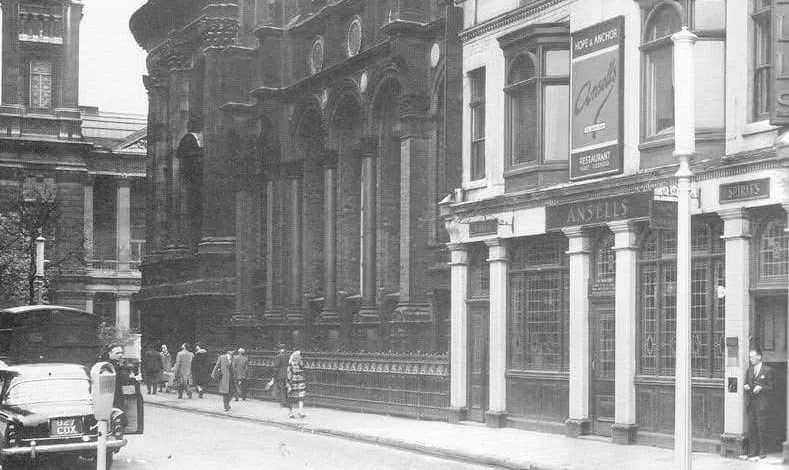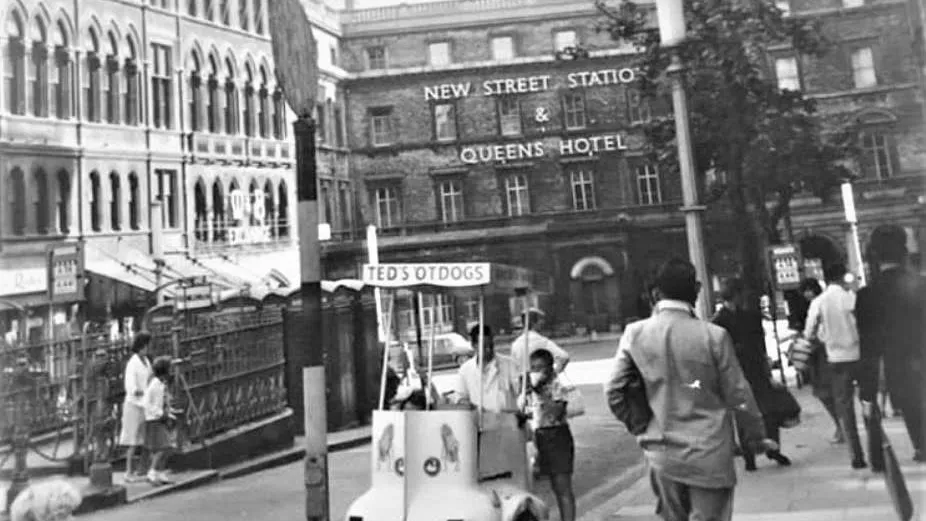The publishing house run by Virginia and Leonard Woolf was always a small-scale affair. At the top of its bestseller lists, with print runs of only a few thousand, stood Virginia Woolf’s own Orlando, her friend Vita-Sackville West’s The Edwardians, and the far more obscure Saturday Night at the Greyhound by John Hampson.
Hampson is the odd one out in other ways. While Woolf and Sackville-West were upper class Southern bohemians, he was a shy, gay Brummie from a modest background, who had spent time in Wormwood Scrubs for stealing books.
Although largely forgotten today, Saturday Night, first published in 1931, would go on to sell 80,000 copies in its later Penguin edition, become a bestseller in France and the US, and be praised by Graham Greene and Evelyn Waugh.
Hampson’s links with some of the literary giants of the period are not only an important part of queer Brummie history. They were also vital in bringing together a loose collective of ordinary Midland writers who would briefly gain national and even international fame. Alongside Hampson, the other members included the short story writer and literary critic Walter Allen, novelist Leslie Halward, short story writer Peter Chamberlain, and Derbyshire novelist Walter Brierley. All, apart from Brierley, were Birmingham natives. Although labelled as ‘proletarian’, they were not all working-class, but did specialise in documenting ordinary lives from first-hand knowledge.
Lecturer and radio producer Reggie (R.D.) Smith and poet Henry Reed — both locals too — were also associated with the group, as were the Birmingham surrealist collective of the 1930s, notably sculptor Gordon Henricx, and brothers John and Robert Melville.
The Birmingham Group, as they became known, would meet in the now-lost pubs around the old Mason College building on Edmund Street and the long-vanished Victorian library. But how ‘real’ was the Birmingham Group? And what is their literary legacy?
Birmingham meets Bloomsbury
John Hampson was Handsworth born, but Leciester raised. His impoverished family had once been managers of Birmingham’s Theatre Royal but had upped sticks when Hampson was a child. Forced to leave education early due to ill health, he worked in an armaments factory during the First World War, followed by shifts in various casual jobs, including running a Derbyshire pub with his sister. There were periods of desperate poverty, during which he was arrested for shoplifting books.
He returned to the West Midlands In 1925, having been offered a permanent job as a long-term carer for a wealthy Birmingham couple’s son who had Down’s Syndrome. Hampson — apparently an intensely sensitive and kind individual — was extremely well-suited to the job, and Four Ashes, the large house the couple relocated to in Dorridge, provided him with a steady environment in which to write.
Hampson sent the Woolfs three manuscripts. The first, Go Seek A Stranger, remains unpublished to this day — the Woolfs were worried about prosecution for its homosexual content, despite believing it to be his best work. This was followed by O Providence, which was published after the third, his bestselling Saturday Night at the Greyhound.
It is the tragic tale of a young Birmingham couple, Fred, a handsome, bullying womaniser and wife Ivy, who take over the lease of a pub in a Derbyshire mining village. They are accompanied by Ivy’s gay brother, Tom, a more worldly figure who helplessly watches the ensuing tragedy — clearly a version of Hampson himself, a motif that would recur in his later novels.
The fictional Derbyshire village has a stark divide between the gentry and workers, who are depicted as poverty-stricken, sullen and sly; the Flacks look down on them as country bumpkins. Meanwhile, Birmingham is remembered with nostalgic fondness by the trio (“Good old Brum, there was no other place like it,” thinks Tom), as a vibrant, urbane place where class is less of a marker, employment is plentiful, and the people are happy to spend money on beer without a second’s thought.
The invention of the Birmingham Group
The Birmingham Group writers were not the first to find literary inspiration in the city: the 1929 publication of Henry Green’s Living, set in a foundry in Bordesley, was seen at the time as the foundation stone of ‘proletarian’ literature. Living was never a major commercial success but has been regarded as a literary classic since publication.
Although Green’s writing was based upon his experience in a factory in the city, he was neither working-class nor genuinely local. He had been brought up in Tewkesbury, and had attended Eton and Oxford. The factory in question was owned by his father. But his work made the city and its ordinary inhabitants acceptable topics and gave some local aspiring writers food for thought.
Walter Allen certainly found encouragement in Green’s work. “It showed me the Birmingham I knew caught from a totally unexpected angle,” he wrote in his autobiography. “Archetypal Birmingham scenes such as the football league match at St Andrew’s [actually Villa Park], the Whitsun bank-holiday outing to the Lickey Hills, the flocks of racing pigeons forever circling over the drab streets, remain extremely fresh and vivid, as if set down for the first time.”
Birmingham deserves great journalism. You can help make it happen.
You're halfway there, the rest of the story is behind this paywall. Join the Dispatch for full access to local news that matters, just £8/month.
SubscribeAlready have an account? Sign In







